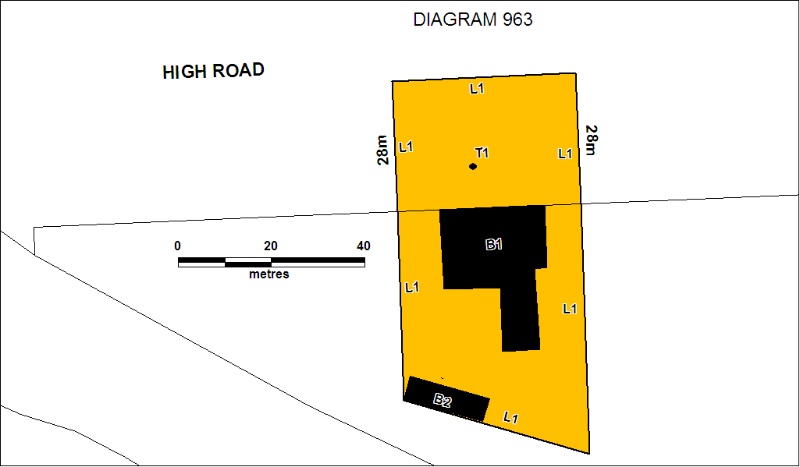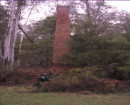GREGORYS BRIDGE HOTEL
10 HIGH ROAD MURCHISON EAST, GREATER SHEPPARTON CITY
-
Add to tour
You must log in to do that.
-
Share
-
Shortlist place
You must log in to do that.
- Download report




Statement of Significance
What is significant?
The Gregory's Bridge Hotel, situated on the banks of the Goulburn River was built between 1865 and 1868 and was known until the 1890s as Thorne's Bridge Hotel and Store. It is a substantial country hotel which also comprises a large general store and cellar as part of the building, stables at the rear and the remnants of a once magnificent garden. In front of the Hotel on the road reserve is a large and outstanding London Plane (Platanus x acerifolia) which was planted in 1916.The tree dominates the north side of the Hotel, and mostly blocks out the facade of the building. The tree has outstanding form, size and branch structure, and is one of the finest and largest London Plane trees in Victoria. The only larger trees known in Victoria occur at The Melbourne Club, Harrietville, and Kyabram.
Once known as the "Mecca of the Valley" because of its four acres of magnificent gardens and riverside setting, the former Gregory's Bridge Hotel was extensively patronised by tourists, commercial travellers and local inhabitants. Thorne was succeeded as licensee by Mr E. J. Gregory who added a second storey to the rear of the building in 1905 and renamed the hotel Gregory's Bridge Hotel. The hotel was said in 1909 to be 'easily the best known hotel in the Goulburn Valley' and was patronised by commercial travellers and tourists as well as locals. It is a historic symbol of the importance of hotels in a late nineteenth century community.
The former Gregory's Bridge Hotel is a substantial reminder of the importance and influence of commercial travellers and the Commercial Travellers Association in Victorian society.
How is it significant?
Gregory's Bridge Hotel Murchison is of architectural, aesthetic and historical significance to the State of Victoria.
Why is it significant?
Gregory's Bridge Hotel Murchison is of architectural significance as a representative example of a substantial two-storeyed brick country hotel with stables of the 1860s with cast iron decorative panels to the return verandah.
The London Plane tree (Platanus x acerifolia), planted in 1916, is of aesthetic (landscape) significance, providing an attractive landscape setting for the historic Gregory's Bridge Hotel. The tree has outstanding form, size and branch structure, and is one of the finest and largest London Plane trees in Victoria.
Gregory's Bridge Hotel Murchison is of historical significance as an example of a substantial country hotel, stables and general store built in the 1860s catering to commercial travellers and tourists.
-
-
GREGORYS BRIDGE HOTEL - History
Associated People: Assoc.People COMMERCIAL TRAVELLER'S ASSOCIATIONGREGORYS BRIDGE HOTEL - Permit Exemptions
General Exemptions:General exemptions apply to all places and objects included in the Victorian Heritage Register (VHR). General exemptions have been designed to allow everyday activities, maintenance and changes to your property, which don’t harm its cultural heritage significance, to proceed without the need to obtain approvals under the Heritage Act 2017.Places of worship: In some circumstances, you can alter a place of worship to accommodate religious practices without a permit, but you must notify the Executive Director of Heritage Victoria before you start the works or activities at least 20 business days before the works or activities are to commence.Subdivision/consolidation: Permit exemptions exist for some subdivisions and consolidations. If the subdivision or consolidation is in accordance with a planning permit granted under Part 4 of the Planning and Environment Act 1987 and the application for the planning permit was referred to the Executive Director of Heritage Victoria as a determining referral authority, a permit is not required.Specific exemptions may also apply to your registered place or object. If applicable, these are listed below. Specific exemptions are tailored to the conservation and management needs of an individual registered place or object and set out works and activities that are exempt from the requirements of a permit. Specific exemptions prevail if they conflict with general exemptions. Find out more about heritage permit exemptions here.Specific Exemptions:General Conditions: 1. All exempted alterations are to be planned and carried out in a manner which prevents damage to the fabric of the registered place or object. General Conditions: 2. Should it become apparent during further inspection or the carrying out of works that original or previously hidden or inaccessible details of the place or object are revealed which relate to the significance of the place or object, then the exemption covering such works shall cease and Heritage Victoria shall be notified as soon as possible. Note: All archaeological places have the potential to contain significant sub-surface artefacts and other remains. In most cases it will be necessary to obtain approval from the Executive Director, Heritage Victoria before the undertaking any works that have a significant sub-surface component. General Conditions: 3. If there is a conservation policy and plan endorsed by the Executive Director, all works shall be in accordance with it. Note: The existence of a Conservation Management Plan or a Heritage Action Plan endorsed by the Executive Director, Heritage Victoria provides guidance for the management of the heritage values associated with the site. It may not be necessary to obtain a heritage permit for certain works specified in the management plan. General Conditions: 4. Nothing in this determination prevents the Executive Director from amending or rescinding all or any of the permit exemptions. General Conditions: 5. Nothing in this determination exempts owners or their agents from the responsibility to seek relevant planning or building permits from the responsible authorities where applicable.Interior
All internal painting works of previously painted surfaces.Preparation work for painting shall not remove evidence of the building's original paint schemes.
Landscape Permit Exemptions
* Repairs, conservation, and maintenance to hard landscape elements, buildings and structures, fountains and monuments, steps, paths, paths and gutters, drainage and irrigation systems, edging, fences and gates.
* The process of gardening; mowing, hedge clipping, bedding displays, removal of dead plants, disease and weed control, emergency and safety garden works* New or replacement planting which conserves the historic landscape character including
specimen trees, avenues, rows, shrubberies flower beds, and lawns.
* In the event of loss of any tree or palm specified in the Extent of Registration, replanting with the same species of tree as that removed.
* Management of trees in accordance with Australian Standard; Pruning of Amenity Trees AS 4373.* Installation, removal or replacement of garden watering and drainage systems outside the canopy edge of significant trees
* Vegetation protection and management of the possum and rabbit population.
* Removal of plants listed as noxious weeds in the Catchment and Land Protection Act 1994Archaeological Permit Exemptions
Regular Site Maintenance
The following site maintenance works are permit exempt under section 66 of the Heritage Act 1995,
* Regular site maintenance provided the works do not involve the removal or destruction of any significant above-ground features or sub-surface archaeological artefacts or deposits;
* the maintenance of an item to retain its conditions or operation without the removal of or damage to the existing fabric or the introduction of new materials;
* cleaning including the removal of surface deposits, organic growths, or graffiti by the use of low pressure water and natural detergents and mild brushing and scrubbing;
* repairs, conservation and maintenance to plaques, memorials, roads and paths, fences and gates and drainage and irrigation.
* The replacement of existing services such as cabling, plumbing, wiring and fire services that uses existing routes, conduits or voids, and does not involve damage to or the removal of significant fabric.
Fire Suppression Duties
The following fire suppression duties are permit exempt under section 66 of the Heritage Act 1995,
* Fire suppression and fire fighting duties provided the works do not involve the removal or destruction of any significant above-ground features or sub-surface archaeological artefacts or deposits;
* Fire suppression activities such as fuel reduction burns, and fire control line construction, provided all significant historical and archaeological features are appropriately recognised and protected;
Note: Fire management authorities should be aware of the location, extent and significance of historical and archaeological places when developing fire suppression and fire fightingstrategies. The importance of places listed in the Heritage Register must be considered when strategies for fire suppression and management are being developed.
Landscape Maintenance
The following landscape maintenance works are permit exempt under section 66 of the Heritage Act 1995,
* Landscape maintenance works provided the activities do not involve the removal or destruction of any significant above-ground features or sub-surface archaeological artefacts or deposits;
Public Safety and Security
The following public safety and security activities are permit exempt under section 66 of the Heritage Act 1995,
* Public safety and security activities provided the works do not involve the removal or destruction of any significant above-ground structures or sub-surface archaeological artefacts or deposits;
* The erection of temporary security fencing, scaffolding, hoardings or surveillance systems to prevent unauthorised access or secure public safety which will not adversely affect significant fabric of the place including archaeological features;
* Development including emergency stabilisation necessary to secure safety where a site feature has been irreparably damaged or destabilised and represents a safety risk to its users or the public.
Signage and Site Interpretation
The following Signage and Site Interpretation activities are permit exempt under section 66 of the Heritage Act 1995,
* Signage and site interpretation activities provided the works do not involve the removal or destruction of any significant above-ground structures or sub-surface archaeological artefacts or deposits;
* The erection of non-illuminated signage for the purpose of ensuring public safety or to assist in the interpretation of the heritage significance of the place or object and which will not adversely affect significant fabric including landscape or archaeological features of the place or obstruct significant views of and from heritage values or items;
* Signage and site interpretation products must be located and be of a suitable size so as not to obscure or damage significant fabric of the place;
* Signage and site interpretation products must be able to be later removed without causing damage to the significant fabric of the place;
Note: The development of signage and site interpretation products must be consistent in the use of format, text, logos, themes and other display materials.
Note: Where possible, the signage and interpretation material should be consistent with other schemes developed on similar or associated sites. It may be necessary to consult with land managers and other stakeholders concerning existing schemes and strategies for signage and site interpretation.
Minor Works
Note: Any Minor Works that in the opinion of the Executive Director will not adversely affect the heritage significance of the place may be exempt from the permit requirements of the Heritage Act. A person proposing to undertake minor works may submit a proposal to the Executive Director. If the Executive Director is satisfied that the proposed works will not adversely affect the heritage values of the site, the applicant may be exempted from the requirement to obtain a heritage permit.
If an applicant is uncertain whether a heritage permit is required, it is recommended that the permits co-ordinator be contacted.
GREGORYS BRIDGE HOTEL - Permit Exemption Policy
Permit Policy
Introduction
The cultural heritage significance of the place is primarily due to the architectural qualities of the original buildings and the historical associations of the site and its significant London plane tree, The hotel, surviving stables and tree are essential elements that demonstrate the significance of the place.
Site
The existing site boundaries should be retained in their entirety.
Existing structures
Any work to the hotel and stables is subject to permit applications.
Non-registered buildings and structures
All works to non-registered buildings, including demolition and internal modification but excluding exterior additions, are permit exempt.
The purpose of the permit exemptions is to allow works that do not affect the cultural heritage significance of the place. Alterations that impact on the significance of the place are subject to permit applications. Permits would be required for any new buildings, structures, landscape works, driveways and paths on the registered land.
-
-
-
-
-
MUNGALLOOK
 Victorian Heritage Inventory
Victorian Heritage Inventory -
Tattambo's Grave (King Of Molka Tribe)
 National Trust
National Trust -
Former Christ Church of England
 National Trust
National Trust
-
'The Pines' Scout Camp
 Hobsons Bay City
Hobsons Bay City -
106 Nicholson Street
 Yarra City
Yarra City -
12 Gore Street
 Yarra City
Yarra City
-
-











